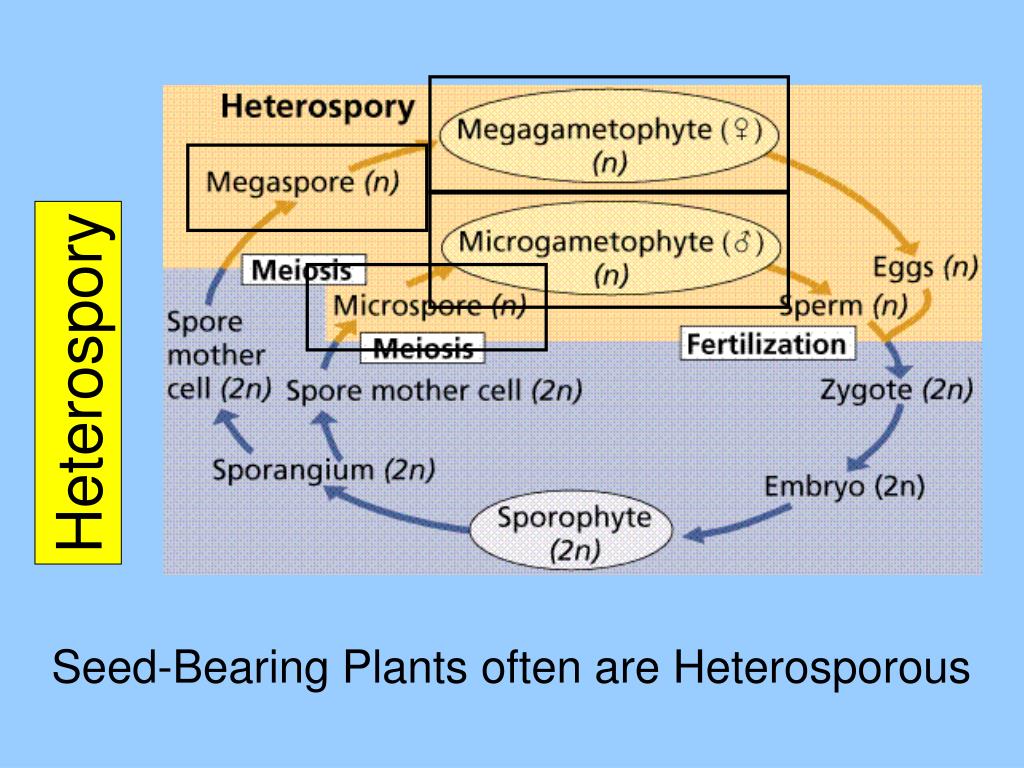Are All Seed Plants Heterosporous? A Clear and Simple Explanation

Let’s get something out of the way: seed plants are all heterosporous—no fine print, no secret exceptions lurking in the undergrowth. But if you’re like most students (and, frankly, even some grad students I’ve tutored), this is one of those classic concepts that seems almost too simple to trust. That’s when mistakes start cropping up—the kind nobody warns you about—especially when a pop quiz or unfamiliar diagram shows up.

Here’s what people typically get wrong about heterospory in seed plants, why it happens, and how to sidestep the traps.
The Hidden Trouble Spots Nobody Tells You About
Mistake #1: “Seed = Spore Confusion”
Don’t feel bad—it took me until my second plant biology midterm to stop mentally blurring “spores” with “seeds.” After all, both are tiny units in reproduction, right? Not quite.
What really happens:
Seed plants ALWAYS produce two kinds of spores—microspores (male gametophyte makers) and megaspores (female). These spores never leave the plant; they mature inside protective structures (like ovules or pollen sacs) and lead directly to sperm or eggs.
Failed first attempt:
The first time I tried sketching a pine life cycle, I drew the microspores floating off into the ether à la homosporous ferns. My professor’s red pen circled this mistake three times: “Microspores do not become seeds; only AFTER fertilization does the seed form!”
Unique strategy to avoid this confusion:
Whenever you see a diagram with both pollen and an ovule/embryo sac on one plant, pause—double-check that these are coming from different sporangia. If so? Heterospory is at work and we’re seeing true seed plant action.

Mistake #2: Chasing Ghostly Exceptions
Every year someone asks if there are “weird” heterosporous seed plants somewhere out there—some magical group their teacher didn’t mention. Spoiler: there are NOT.
Why this myth persists:
Old textbooks sometimes reference fossil groups that blur the lines (looking at you, ancient progymnosperms). Or they note aquatic ferns like Azolla, which are heterosporous but don’t even make seeds!
How to reframe your thinking:
Remember—the jump from homospory to heterospory was a BIG evolutionary leap. By the time true seeds appeared (picture Earth circa 320 million years ago), heterospory had locked itself in as a prerequisite. If you’re looking at a modern-day gymnosperm or angiosperm? Heterospory all the way.
Mistake #3: Getting Tricked by Misleading Language
Textbooks love throwing around terms like “unicellular” and “multicellular” spores—as if THAT’S what makes something hetero- vs. homosporous. Wrong metric entirely.
How I learned this one:
I answered an old exam question with “heterospory evolved when spores became more complex,” but got partial credit because complexity isn’t enough—you need separate sex-specific spore development pathways.
Sensory detail tip:
When looking under a scope:
- Ferns—just one bland batch of identical dust.
- Seed plants—distinct structures for micro (pollen) and mega (ovule) forms every single time.
If you can physically sort micro from mega products, congrats—you found heterospory in practice!

Pinpointing Heterospory in Real Plants
When browsing your garden or flipping through lab slides:
- Pollen grains from lilies? Microspores.
- Tiny beginnings inside an acorn? Megaspore origin.
Two tracks; zero overlap.
And for gymnosperms: crack open a pine cone and each scale guards an ovule—every egg cell inside traces back to one chosen survivor among four original megaspores per mother cell (a genuinely wild bit of resource allocation).
The Why Behind All This
Still tempted to gloss over why splitting reproductive labor matters?
Consider how frustrating it’d be for land plants if every spore had equal odds of becoming either sex—that system works for ferns drifting by pond edges but falls apart once you want big, protected offspring on dry land.
Heterospory lets evolution do two things at once:
- House female gametes deep within protective tissue (“megagametophyte safe zone”)
- Streamline sperm delivery via lightweight pollen
You could say the invention of separate male and female spore lines set up everything cool that followed—seeds themselves, flowers, cones… even human agriculture owes its existence to this ancient divergence!

Strategy Time: Lock In Your Knowledge
Whenever I helped classmates prep for finals, I’d challenge them:
- Draw BOTH life cycles on one sheet—from generic fern through pine tree—and label differences with thick markers.
- For each seed plant structure named in class notes, literally point out whether it starts as micro/mega SPORE or not.
- Invent tricky True/False questions (“Some gymnosperms can be homosporous”—False!) and swap them with others.
- Try explaining why homospory never made seeds, as if you were teaching high schoolers—they’ll force you to clarify what really matters!
The best way not just to memorize but internalize:
- All seed plants produce both microspores (→ pollen → sperm)
- And megaspores (→ embryo sac/ovule → egg)
No solo act ever becomes a seed; it takes both.
If You’re Still Wobbly…
Stuck distinguishing between weird clubmosses or reading muddy terminology? Grab Campbell Biology or Raven & Johnson’s Plant Biology—look at labeled diagrams for angiosperms/gymnosperms specifically focusing on their stamen/pistil or cone cross-sections. Highlight every mention of distinct male/female sporangia—that’s your north star for future tricky questions.
And remember my favorite correcting phrase when tutoring:
“If you can show which structure makes which type of gamete starting from two different types of spores…it’s 100% heterosporous!”
By grounding yourself in WHY heterospory exists—not just THAT it does—you turn automatic recall into genuine understanding few peers possess.
It may seem basic at first glance…but getting this right will save you grief on exams and give insight into how terrestrial plants conquered Earth itself!



